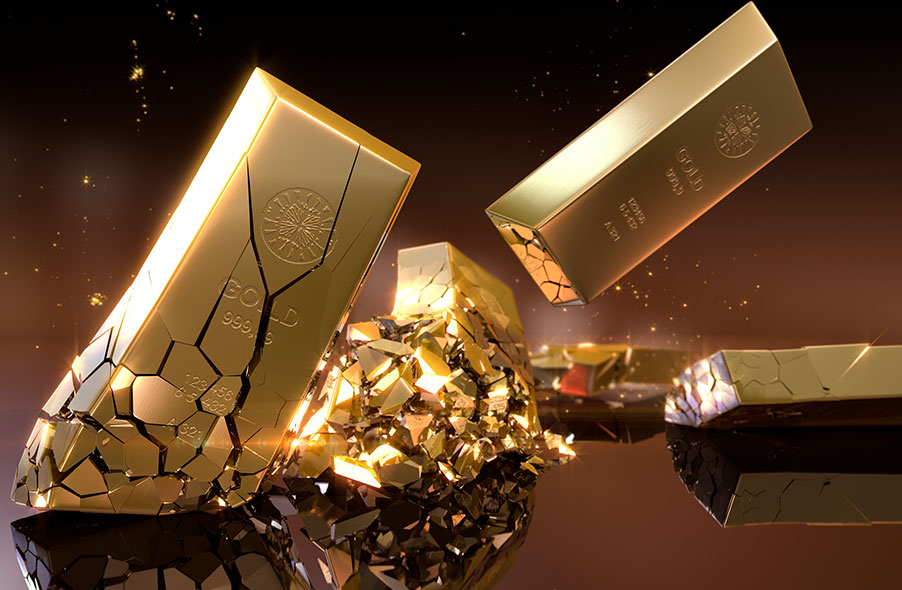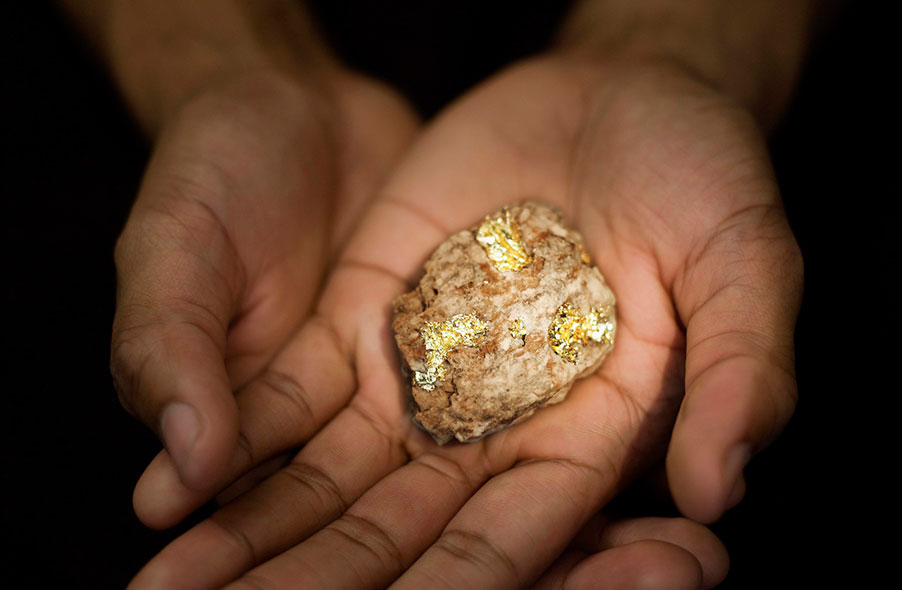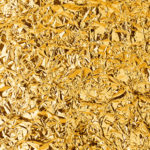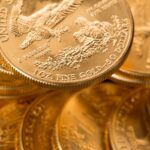If you closely follow economics, investing, or are a fan of history, you have probably heard the expression Fool’s Gold. Have you ever wondered how that saying became a part of the English language and its relation to real gold?
We prepared a short guide for you, explaining what fool’s gold is and how to tell it apart from the real thing.
What Is Fool’s Gold?
Fool’s gold is a colloquial name for the mineral pyrite, which has a striking resemblance to real gold. The resemblance was so close that people and gold prospectors have mistakenly identified pyrite as gold throughout the years.
To be precise, pyrite is not the only mineral associated with fool’s gold, but it is the most common. Other minerals, such as chalcopyrite and biotite mica, also have a close resemblance to gold, but people encounter them less often.
Origins of the Fool’s Gold Saying
The early exploration of the New World was under the massive influence of the quest for gold, precious stones, and other riches the new colonies could offer. Martin Frobisher was a famous pirate that built a reputation for attacking and looting Spanish ships in the Atlantic. He was so good at his job that even Queen Elizabeth took notice.
He was quickly drafted into the Royal Navy and tasked with a mission to look for the elusive Northern Passage to China in 1576. His mission took him to the Baffin Island near the Arctic Circle, where he thought he found China. After being kidnapped by the Inuits, Frobisher managed to steal some ore samples that resembled gold and then made his way back to England.
The Queen’s experts examined the ore, and the final verdict was that it was worthless fool’s gold. Ironically, the story of fool’s gold mission and Frobisher did not end there. The hunger for gold was so powerful at the time that the Queen’s court persuaded themselves and the Queen herself that it was indeed a low-grade gold ore, and they even found a new “expert” to confirm it.
They provided Frobisher with more ships and men to establish a mining operation on Baffin Island. Frobisher made two more trips back to England, carrying thousands of tons of the mysterious ore. Each of the shipments was worthless, as the ore was mineral pyrite, not precious metal gold.
Ever since the saying “fool’s gold” has been a part of the English language, used to describe something shiny, flashy, or greatly-desired but has no real value. The saying fool’s gold went mainstream during the famous gold rushes in the USA, where plenty of prospectors saw their dreams of fortune disappear by running into pyrite.
The Main Differences Between Pyrite and Gold
Before getting to the practical advice on how to tell pyrite and gold apart, it is essential to mention how pyrite and gold differ on a structural level.
Gold is a metal of golden-yellowish color, found in a pure state in nature. Due to its rarity, attractive appearance, and shine, gold is frequently used to create jewelry or other decorative elements. Gold also found its way into currency, as most of the early high-value coins were either silver or gold. Later on, gold became a part of the Gold Standard, a monetary system where the value of a country’s currency is directly linked to gold.
Pyrite is not a metal but a mineral. It is an iron-sulfide with a brass-yellow color. Often found in sedimentary and metamorphic rock, pyrite is a widespread mineral. The resemblance to gold is quite close, especially to inexperienced eyes. The distinction is even more difficult since pyrite and gold are often present together in rock formations, creating even more confusion.
How to Tell Gold and Fool’s Gold Apart

Those who work with gold and have special training working with metals or minerals will quickly distinguish between the two, but conducting a simple test is a better option for most of us. If you intend to deal with gold in the future, it is a good idea to acquire some samples of both gold and pyrite and try out some of the tests listed below.
Before we move onto the test, it is crucial to mention that some of these tests are destructive and can damage the gold nugget’s surface. Gold has a remarkable ability to form crystal-like shapes, and those pieces of gold have a significantly higher value than the actual weight of the gold piece. We recommend abstaining from performing destructive tests on those gold pieces.
Non-Destructive Tests
Non-destructive testing methods will not damage gold or pyrite and are often the simplest to execute.
Tarnish
Tarnish, or patina is a thin layer of corrosion that forms on some metals and minerals. It is usually a different color from the original mineral or metal and acts as a protective layer for the metal or mineral from outside elements.
Pyrite, in the majority of cases, comes with tarnish on the surface of the mineral. On the other hand, gold nuggets do not have tarnish and are quite bright, a defining characteristic of gold and one of the primary reasons why jewelry and decorations are made with gold.
Color
If looked at separately, gold and pyrite might seem to be the same color, but it will become apparent that they don’t as soon as you put them next to each other. Pyrite has a brass color that is less shiny and bright compared to the golden-yellow color of gold. Additionally, gold often comes alloyed with silver. If the alloy contains a higher concentration of silver, then gold will have a white-yellowish color.
Shape
One of the easiest ways to tell gold apart from pyrite is paying close attention to the shape. Pyrite minerals often have angular shapes that have sharp edges and corners. Alternatively, pyrite can also resemble a cube, octahedron, or pyritohedron.
On the other hand, gold nuggets have a much softer appearance with often round and polished edges. But it is crucial not to disregard the gold’s crystal formation. Crystalline pieces of gold can often come in shapes that resemble a pyrite mineral. When in doubt, the best advice is not to rely solely on the shape test.
Specific Gravity
Specific Gravity of an object is the object’s weight divided by the object’s volume. Gold and pyrite have significantly different specific gravities. Gold is much more “dense” than pyrite, having a specific gravity of 19.1, and pyrite has a specific gravity of around 5. When comparing pieces of gold and pyrite of similar sizes, the gold piece should be much heavier.
However, gold often comes in alloys. Some of the metals that gold forms alloys with often have a similar specific gravity to pyrite. In those situations, alloys with low gold content can have a similar specific gravity to pyrite. Still, alloys with significant gold content will always weigh more than pyrite.
Striations
Striations are fine parallel lines only found on the face of pyrite, lines gold never has. Always give it a thorough examination, as tools and equipment for digging gold can often leave striation-like lines on the gold pieces.
Destructive Tests

Destructive testing on gold and pyrite often includes the use of tools and equipment that will alter the look and often damage the structure of gold and pyrite. Only use this testing if you are comfortable with that.
Streak Testing
Streak testing involves testing both gold and pyrite against a fine porcelain surface. When you use gold to roughly scratch a white porcelain surface, it will leave a recognizable yellow streak. On the other hand, pyrite will leave a black-greenish streak on the porcelain.
Hardness Testing
Hardness testing using the Mohs scale is probably the most popular destructive testing. Materials that are higher on the Mohs hardness scale can scratch and leave marks on the surface of materials that are lower on the Mohs scale.
Gold has a hardness of 2.5 on the Mohs scale, while pyrite is anywhere between 6 and 6.5. A piece of pyrite will leave scratches and marks on gold; gold will not leave scratches on pyrite. A sharp piece of copper is often used in this test. With a hardness of 3 on the Mohs scale, copper will leave marks on gold, while pyrite will remain unmarked.
Ductility
Ductility is the ability to bend elements without breaking them. Gold is very soft and ductile, easily bending or denting when pressured by a sharp point of a wooden stick or a metal pin. Pyrite offers resistance and does not bend or dent. If you put an extreme amount of pressure on pyrite, it will break into pieces rather than bend.
Sectility
Gold is a sectile metal. You can cut it into smaller pieces by using a sharp pocket knife and even scissors. Pyrite is not sectile and does not share these properties.
Now that you are up to speed with telling real gold apart from fool’s gold, it is time to take action. Learn About Gold is your one-stop-shop for everything related to gold. We provide articles and blog posts about gold investment trends and excel at matching people with the best Gold IRA providers. Check out our website and learn how we can add more value to your investments.





